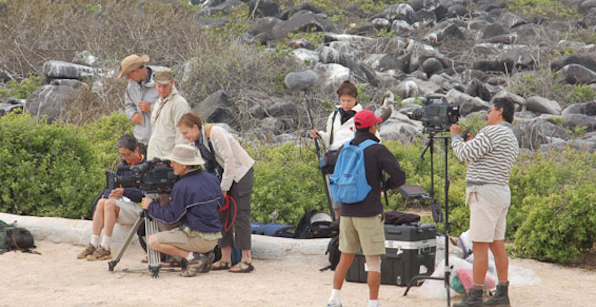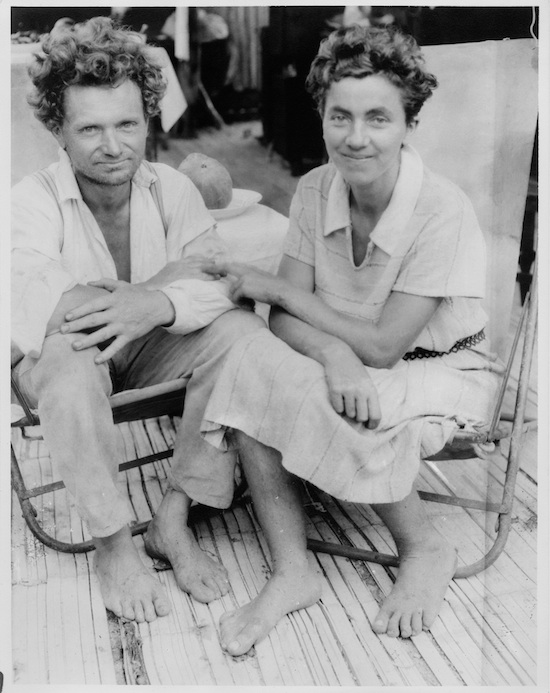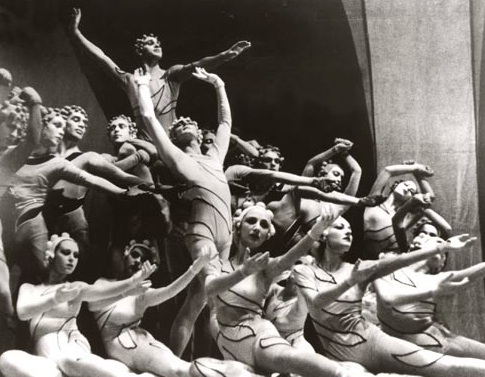About fifteen years ago, Dayna Goldfine and Dan Geller were hired to shoot a piece aimed at middle-school kids on evolution and natural selection in the Galapagos Islands. Goldfine, a true-crime aficionado, chanced to pluck a book off a shelf while they were on location—and read about a pair of mysterious disappearances decades earlier. Five trips to the Galapagos later, with more to come, the husband-and-wife documentary filmmakers were up to their waists in what would eventually become their latest film, which premieres alongside work by Alfonso Cuarón, the Coen Brothers and Errol Morris at Telluride’s 40th Film Festival this weekend: The Galapagos Affair: Satan Came to Eden.
Let’s be frank: Unsolved murders are premium-grade catnip for doc filmmakers and audiences alike. But as Geller and Goldfine delved into the history, and befriended descendants of the key figures and residents of the Galapagos, the alleged crimes moved to the periphery and a deeper question gripped them: What makes people want to give it all up and go to the end of the earth, and live on what they hope will be a deserted island?
“There are no indigenous people” in the Galapagos, Goldfine explained. “The only people who lived there or chose to live there were pioneers on these volcanic islands. Not just from Ecuador, which owns the Galapagos, but from Europe and America, who’ve colonized the islands.”
Living off the grid and amid picturesque nature may sound romantic to us urbanites, but in such conditions survival can’t be taken for granted. You’ve got to be fit, per one Charles Darwin, who’s forever linked with the Galapagos. “When you bring up paradise, some of them get really angry,” Goldfine confided. Gil De Roy, a fifty-year-old who was born on the island, rhapsodized to the filmmakers about how wonderful it was for a child. His elderly mother erupted. “Paradise for you, but you didn’t have to make a house out of lava rock, and kill and clean food.”
Fulfilling basic needs was one thing; getting along with one’s own species was another. The iconoclastic emigres in the middle of the long-ago dispute were a rustic German family happily roughin’ it and an Austrian baroness with a gaggle of young men. If they crossed swords as well as paths, well, isn’t that human nature? “Even though people left their homeland as individuals or family units, they had to negotiate a social existence,” Geller noted. “You could put [just] ten people on an island and have a conflict.”
The filmmakers, who mined rare and astonishing archival footage for their theatrical hit doc Ballets Russes, discovered a trove of 16mm film and manuscripts in the University of Southern California archives. The celluloid was shot by Capt. Allan Hancock, a Southern California industrialist and sailor who made eight trips in the thirties to the Galapagos with scientists, a photographer, a filmmaker and (on occasion) a chamber orchestra. (Hancock Park in L.A. is named after this high roller.)
Goldfine and Geller unexpectedly located other archives, even as they continued to meet colorful people on the islands who they wanted to work into the film. The more great stuff the better, you say. Sure, but all that material complicates and elongates the editing process, and boosts the budget. The filmmakers, surprisingly, didn’t mind.

“We’re going to take as much time as it takes to weave all those characters together,” Geller said. “The true freedom of working independently, for all the costs, is we don’t have to be done by any particular time and we don’t have to answer to someone else’s conception of what the movie should be like.”
Goldfine was in no hurry either—especially if they could work in a few more escapes to the islands.
“The Galapagos, for me, are about a bunch of people who have left all the material things that we take for granted, and they function fine without them. What I find happens [when we return] is I kind of hibernate for a couple days. Things feel really jarring. So I can be emotionally in touch with the material, I want to keep going back every six months.”
Geller and Goldfine’s documentary, whose voice cast (Variety reports) includes Cate Blanchett, Diane Kruger, Connie Nielsen, Sebastian Koch, Thomas Kretschmann, Gustaf Skarsgård and Josh Radnor, plays Telluride’s main program, ‘The Show,’ this weekend. This article appeared in a different form originally in 2008 while the work was in-progress.






